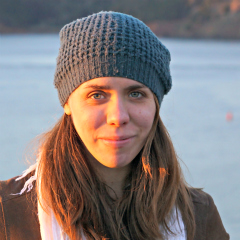
Measuring Forecasting Proficiency: An Item Response Theory Approach
1Fordham University, 2University of British Columbia, 3University of Cambridge, 4Federal Reserve Bank of Chicago, 5Georgia Institute of Technology, 6Forecasting Research Institute
Quantile Forecasts
The Forecasting Proficiency Test (FPT; Himmelstein et al., 2024) is a test developed to measure forecasting proficiency. The FPT uses quantile forecast items:

Quantile forecast items are designed to elicit an individual’s subjective cumulative distribution function (CDF) regarding a future continuous outcome
Each individual provides 5 monotonically increasing responses
Responses are unbounded
Forecast accuracy is the measure of interest
GOAL: in IRT fashion, modeling forecast accuracy by positing a statistical model that accounts for both person and item features
Defining Forecast Accuracy
Responses to FPT quantile forecast items are on very different scale (e.g. dollars/gallon, thousands of dollars, percentages,…). We define the outcome measure, historically scaled accuracy, as
\[ Y_i = \frac{\hat{Y}_i - Y_{\mathrm{res},i}}{SD_{Y_{\mathrm{hist},i}}} \]
- \(\hat{Y}_i\): Reported forecast for item \(i\) at any quantile.
- \(Y_{\mathrm{res},i}\): The resolution for item \(i\).
- \(SD_{Y_{\mathrm{hist},i}}\): The \(SD\) of the historical time series of item \(i\).
\(Y_i\): SD units away from the resolution.


The Proposed Model
We model \(Y_{jiq}\), the accuracy of person \(j\) to item \(i\) at quantile \(q\).
\[Y_{jiq} \sim \mathrm{Student\ T}(\mu_{iq}, \sigma_{ji}, \mathrm{df}_i) \\ \mu_{iq} = b_i + Q_q \times d_i \\ \sigma_{ji} = \frac{\sigma_i}{\mathrm{Exp}[a_i \times \theta_j]}\]
- \(b_i\): item bias (irreducible uncertainty)
- \(d_i\): expected quantile distance. \(Q_q\) is a vector of constants that ensures monotonicity of \(\mu_{iq}\)
- \(\sigma_i\): item difficulty
- \(\theta_j\): Forecasting ability, the only person parameter in the model
- \(a_i\): item discrimination (i.e. the magnitude of the effect of \(\theta_j\) on \(\sigma_i\))
Data Collection
Item forecasts were collected across 5 waves of a 7 Wave study.
- 32 items divided across 6 forms (A, B, C, D, E, X) and 1194 participants
- Diverse item domains: Financial, political, technology, energy…
- 1 week interval between waves, and 1 month from resolution at wave 7
Model Estimation and Item Parameters
All models were estimated in PyMC (Abril-Pla et al., 2023) using Markov Chain Monte Carlo (MCMC) estimation (warmup = 1000, draws = 5000, ~ 40 minutes). All Rhats \(\leq 1.01\).

Person Parameter: \(\theta\)
Distribution of \(\theta\) for the 1194 forecasters (better forecasters have higher \(\theta\) values).

Who gets Higher \(\theta s\)?
Forecasters who consistently approach the expected forecasts are rewarded

Predicting Out of Sample Accuracy

Expected Item Information
One advantage of the \(\theta\) metric is that it allows for the calculation of expected item information, \(\mathrm{EI}(\theta)\) :
\[Y_{jiq} \sim \mathrm{Student\ T}(\mu_{iq}, \sigma_{ji}, \mathrm{df}_i) \\ \mu_{iq} = b_i + Q_q \times d_i \\ \sigma_{ji} = \frac{\sigma_i}{\mathrm{Exp}[a_i \times \theta_j]}\]
- Items with higher \(\sigma_i\) measure more skilled forecasters better.
- Higher \(a_i\) implies better measurement within a narrower interval of \(\theta\).
- \(df_i\) functions in a similar way to \(\sigma_i\).
- The parameters within \(\mu_{iq}\) do not influence \(\mathrm{E} \mathrm{I}(\theta)\) much.
Stability of Parameters
Given the complexity of the FPT items, item parameters are likely to change depending on many factors. Still, there seems to be reasonable stability even after a month between Wave 1 and Wave 7 (test-retest):

Takeaways
- The current approach captures meaningful difference across FPT items (i.e., bias, difficulty, discrimination,…)
- The \(\theta\) metric is easily understood and viable for scoring individuals
- Item information can be calculated, although the practical uses are not as straightforward as conventional testing scenarios



Acknowledgments






References And Contacts

Appendix
Negative Log-Likelihood of \(\theta\)
Negative log-likelihood function of \(\theta\) given item parameters and participant response:
Between Item Parameters Correlation
| a | b | d | df | sigma | |
|---|---|---|---|---|---|
| a | 1.00 | -0.17 | 0.00 | -0.57 | -0.04 |
| b | -0.17 | 1.00 | -0.33 | -0.18 | -0.51 |
| d | 0.00 | -0.33 | 1.00 | 0.35 | 0.86 |
| df | -0.57 | -0.18 | 0.35 | 1.00 | 0.52 |
| sigma | -0.04 | -0.51 | 0.86 | 0.52 | 1.00 |
IMPS 2025



